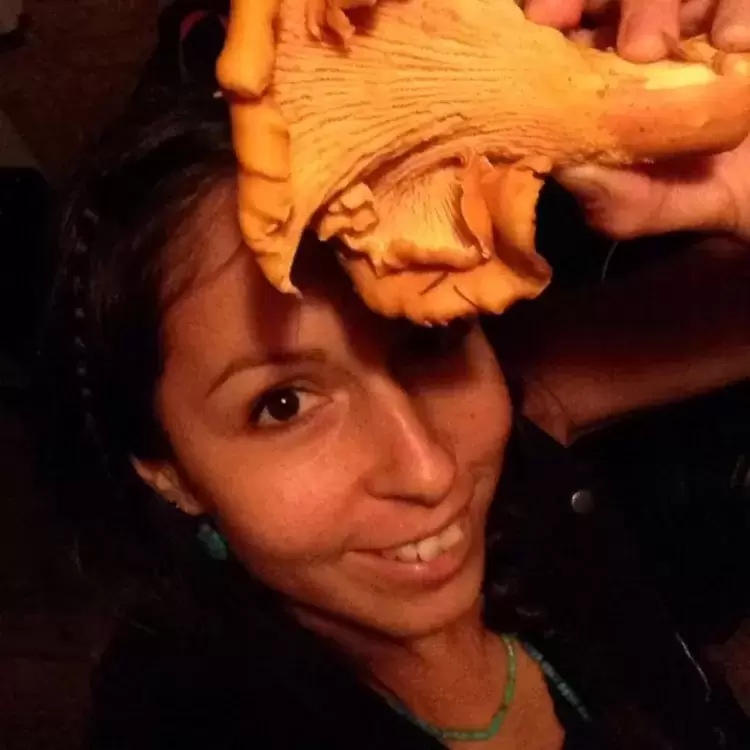Know your favourite fungi.
That’s the golden rule among Nuu-chah-nulth food gatherers who savour the Island’s abundant wild mushrooms, some of them prized, others deadly poisonous.
Tracking a record number of mushroom poisonings this year, B.C. Centre for Disease Control (BCCDC) has issued a public warning about the risks of consuming unidentified fungi. By fall, more than 200 mushroom poisonings were reported in the province, as many as all of 2018 and a 20 percent increase over 2017.
Anyone who gathers wild mushrooms needs to be knowledgeable and cautious, but children and pets are most at risk when it comes to poisonings.
“Approximately two thirds of mushroom related poisoning calls in 2019 involved children under the age of five,” said Raymond Li, a pharmacist with Poison Control.
Thousands of native species of mushrooms are found on the Island, a handful of them commonly harvested by wild food crafters. Some — such as chanterelles and pine mushrooms — are harvested for sale. However, it’s a non-native invasive species — ominously known as the death cap (amanita phalloides) — that causes particular concern due to its recent spread, deceptive appearance and extreme toxicity.
“It is important to be aware of dangers from consuming unidentified mushrooms, especially death cap mushrooms,” Li said. “We would like to remind mushroom hunters, parents and pet owners to be vigilant as they enjoy city, parks, forests and even their own backyard.”
While death caps have been found mostly in the Lower Mainland and Victoria, the species has been spreading north and into native habitats, BCCDC reports. A Victoria toddler died three years ago after consuming a death cap.
Death caps are believed to have arrived in B.C. years ago in the roots of imported European trees. They are found growing among the roots of broadleaf trees, including native Garry oak. Three recent poisonings suggest they can be mistaken for edible varieties, including edible puffballs when the death caps are young and Asian straw mushrooms when they mature. Their potential spread is mapped as far west as Port Alberni, but there are no known locations pinpointed. (For more information on death cap mushrooms, see shorturl.at/ejUX1.)
Maria Desnoyer, a Port Alberni resident from Hesquiaht First Nation, has always gathered wild mushrooms. She said she and her husband found chanterelles and shaggy manes their favourites, in abundance this season. They picked 40 Ziploc bags full.
“It was an amazing year,” Desnoyer said.
Gisele Martin, a Tl-o-qui-aht language and culture activist as well as an educator and artist, is also a mushroom lover.
“I like giant puffballs, chanterelles, orange peel fungus, angel wings, slippery jack boletus,” she said, reeling off a few of her favourites. “I love chicken of the woods. They remind me of mozzarella. I like pine mushrooms.”
Neither Desnoyer nor Martin has come across death caps.
“I honestly don’t know what they would look like,” Desnoyer said, though she’s familiar with the native species amanita muscaria, also toxic.
Mushroom gatherers hunt for their favourites and know distinctive characteristics.
“Once you get to know them, you can tell … but it can take some time,” said Martin, who lives at Esowista (Long Beach), “one of the most beautiful places in the world.”
A former search and rescue team member, she thinks the greatest hazard for mushroom gatherers is getting lost rather than consuming toxic varieties. People can be more focused on their search than on their surroundings.
“It’s really important to know where you’re going and not just stare at the ground,” Martin said. “Be aware that you’re in other animals’ territories.”
How common are wild mushrooms in Indigenous diets? According to a 2008-2009 study, 24 percent of B.C. First Nation respondents included mushrooms as part of their traditional food, not up there with fish (95 percent), berries (85 percent) or land mammals (84 percent) but more significant than birds/fowl (17 percent).
Martin pointed to cultural protocols for harvest of natural foods and the paramount importance of the Nuu-chah-nulth expression, hishuk’ish tsawalk: “Everything is one.”
“That is demonstrated by mushrooms in a way,” she observed, pointing out that mycelium, the thread-like vegetative part of the plant, can spread over an area as large as 10 kilometres, connecting the forest at its roots. Fungi play an essential role in decomposition and regeneration of the whole ecosystem.
Ethnobotanical literature approaches the subject from a use-centred perspective. A whole body of Indigenous knowledge related to the care and relationship with plants is omitted, Martin said. She obtained much of her fungi knowledge from books, five to be precise, cross-referenced, and learned to take spore prints, the proper way to identify species.
While edible mushrooms thrive within the Island’s dense forest canopies, fungi overall have been adversely affected along with the forest since European contact, most recently through over-harvesting, Martin said. People often pick them too small.
“There are certain rules,” she said. “Try not to pick smaller than a toonie. I always cut my mushrooms. I don’t rip them out of the ground.” This leaves mycelium intact for regeneration.
Just as there is more to the mushroom than meets the eye, there is more to Martin’s approach than just knowing what’s edible. Hers is a holistic Indigenous approach that honours the relationship between living beings. She recalled a word taught to her by Tla-o-qui-aht elder Levi Martin: Yuchap (yuuts-hap), meaning, “Let us walk carefully with humility and dignity.”
“It begins by having respect the first time you step into a forest,” she said.
Plants can sense your energy. The whole forest knows you’re coming, she said. Go gently rather than crashing through the bush.
“It’s not just what we eat, it’s how we eat. It’s not just what we gather, it’s how we gather.”
She extends that appreciation to language.
“I don’t believe in ‘wild food’ anymore,” she said, questioning the very meaning of the word “wilderness” in its dictionary definition as an uninhabited and inhospitable region.
Instead of “wild food,” she prefers a more accurate description — “Nuu-chah-nulth food.”







